-
Storing renewable energy underground for a reliable, affordable national grid
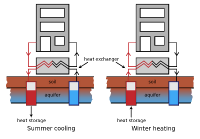
A common criticism of a total transition to renewable energy — wind, water, and solar power — is that the U.S. electrical grid cannot affordably store enough standby electricity to keep the system stable. Researchers propose an underground solution to that problem. The researchers use data from single-state calculations of the number of wind, water, and solar generators potentially needed in each state to show that these installations can theoretically result in a reliable, affordable national grid when the generators are combined with inexpensive storage and “demand response” — a program in which utilities give customers incentives to control times of peak demand.
-
-
Equatorial regions’ power at risk from stormy space weather
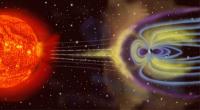
Stormy space weather sweeping across the equator is threatening vital power grids in regions long considered safe from such events, ground-breaking new research reveals. The researchers found that these equatorial electrical disruptions threaten power grids in Southeast Asia, India, Africa, and South America, where protecting electricity infrastructure from space shocks has not been a priority.
-
-
U.S. enhances national space-weather preparedness

Space-weather events are naturally occurring phenomena in the space environment that have the potential to disrupt technologies and systems in space and on Earth. These phenomena can affect satellite and airline operations, communications networks, navigation systems, the electric power grid, and other technologies and infrastructures critical to the daily functioning, economic vitality, and security of the United States. The White House Office of Science and Technology Policy said that that is why the administration the other day released a National Space Weather Strategy and National Space Weather Action Plan, and announced new commitments from the federal and non-federal sectors to enhance national preparedness for space-weather events.
-
-
Quickly, inexpensively locating short circuits in power grids
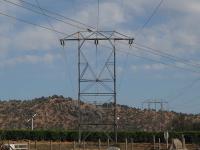
When a high-voltage power line is damaged by wind, ice, or a tree, electricity utilities must quickly find the fault location and repair it to meet the power quality requirements or avoid cascade blackout. In the common practice, they locate the fault by first identifying the section without power through the use of sensors placed at regular intervals along the power line. A technician must then go to that section and visually inspect the line in order to find the fault location. Researchers have come up with a new method, which is faster and less expensive, for precisely determining where the short circuit takes place.
-
-
Smart grids better able to withstand climate change challenges
At the end of October 2012, Hurricane Sandy swept across the northeastern United States at speeds of more than 90 mph. Millions of people were left in the dark. In an era of climate change, energy management systems will have to become increasingly robust in order to withstand natural disasters like Sandy – and also floods, wildfires, heat waves, and droughts. The U.S. power supply — with more than 9,200 power plants and nearly half a million kilometers of overhead lines, about a third of a million miles – is already feeling the strain today. Smart Grid technologies have helped to make power grids more resilient to climate change challenges.
-
-
Innovative ways to protect the smart grid
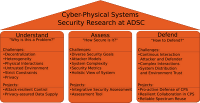
The physical infrastructure of the U.S. electric grid is aging, overburdened, and vulnerable to natural hazards. This is not the bad news. The bad news is that efforts to solve these issues have opened the door to new vulnerabilities. New approaches which transform how energy is produced, delivered, and consumed have created increased reliance on complex data flows, interconnected systems, and sophisticated technologies – that is, the new smart grid. With smarter systems, however, come equally smart hackers. To stay one step ahead of cyberattacks, engineers and scientists are exploring innovative new ways to operate and secure the grid, using the tools of game and control theory.
-
-
2013 attack on Metcalf, California power grid substation committed by “an insider”: DHS
A senior DHS official last Wednesday revealed that a 2013 sniper attack on a Metcalf, California energy grid substation – which the top U.S. electrical utility regulator has called “the most significant incident of domestic terrorism involving the grid that has ever occurred” — may have been committed by someone on the inside. The attackers fired more than 100 rounds of .30-caliber rifle ammunition into the radiators of seventeen electricity transformers, which caused the radiators to leak thousands of gallons of oil, which made electronics overheat and shut down.
-
-
Grid Security Conference focuses on information sharing among stakeholders
More than 300 industry and federal partners are participating in the North American Electric Reliability Corporation’s (NERC) annual grid security conference, or GridSecCon, in Philadelphia, which opened on Wednesday and ends today. The conference is focusing on key cyber and physical security issues and training for enhancing the security and resiliency of the North American bulk power system. Topics of panel discussions include upgrades to NERC’s E-ISAC, cyber and physical security technology options, the transition to Version 5 of NERC’s critical infrastructure protection standards; and expectations for NERC’s third grid security exercise, GridEx III, which takes place 18-19 November.
-
-
Protecting the U.S. power grid from cyberattacks
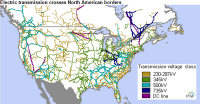
In the first half of Fiscal Year 2015, the Industrial Control Systems Cyber Emergency Response Team (ICS-CERT), part of the Department of Homeland Security, responded to 108 cyber incidents impacting critical infrastructure in the United States. As in previous years, the energy sector led all others with the most reported incidents. Researchers from Florida International University’s (FIU) College of Engineering and Computing have teamed up with four other universities and a utility company to help safeguard the nation’s power utilities from cyberattacks.
-
-
U Warwick, U.K. National Grid expand £1.5 million partnership
Last week the University of Warwick and the U.K. National Grid have signed a Memorandum of Understanding (MoU) to extend the strategic alliance they have operated for last two years. To date that alliance has engaged in over £1.5 million worth of research and student scholarships in areas such as electricity transmission asset management, gas transmission, micro-tunneling, and cyber security.
-
-
Grid Game teaches students about electric grid complexity, resilience
Outages caused by severe weather cost the U.S. economy an average of $18 billion to $33 billion a year. The hits come from lost output and wages, spoiled inventory, delayed production, and damage to the electric grid. Engineers and teachers have developed a Grid Games — desktop simulation which allows players to keep load and generation in balance. “Red Team” participants can even mount financial and cyberattacks in real time, making the game even more interesting.
-
-
New facility will be center of research to make U.S. grid more robust, smarter
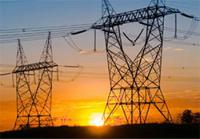
The U.S. electric power grid is the most complex machine ever built. Transforming it from an early twentieth century machine to a twenty-first century engine for innovation is a demanding scientific and technical challenge. The Pacific Northwest National Laboratory has launched its new Systems Engineering Building (SEB), in which industry, academia, and leading scientists will conduct research which will change the future of the U.S. power grid. “The private sector and the government must work together to ensure that we can prevent and recover from grid disruptions, whether they come from cyberattack, physical attack, or severe weather that is brought on by climate change,” Deputy Energy Secretary Elizabeth Sherwood-Randall said at the building’s dedication.
-
-
DOE grant to make Sacramento, Calif. grid more resilient in emergencies
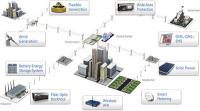
The Department of Energy (DOE) has awarded the Sacramento Municipal Utility District (SMUD) $600,000 to install smart-grid technologies which will make the SMUD grid more adaptable to adversity. The Grid Resilience Grant helps fund half of SMUD’s $1.2 million Resilient Grid Initiative which is designed to make SMUD’s distribution system more adaptable to major disasters and reduce the effects of climate change through the installation and operation of high-voltage (69 kilovolt) switches and the implementation and operation of voltage optimization measures. These measures will increase the carrying capacity of the system during major natural disasters and other emergencies.
-
-
Forecasting tool reduces costly power grid errors
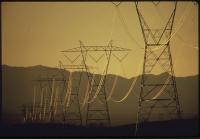
Accurately forecasting future electricity needs is tricky, with sudden weather changes and other variables impacting projections minute by minute. Errors can have grave repercussions, from blackouts to high market costs. Now, a new forecasting tool that delivers up to a 50 percent increase in accuracy and the potential to save millions in wasted energy costs has been developed by researchers.
-
-
Integrating renewable and nuclear power plants into the electrical grid
“Electrical grids can work if, and only if, the amount of electricity inserted into the grid from power plants is matched, second by second, to the amount of electricity extracted from the grid by consumers.” If this does not happen there are black-outs. In order to maintain this equilibrium we must focus on two things: demand and supply of electricity into the grid. New research into sustainable energy systems focuses on integrating renewable and nuclear power plants into the electrical grid — a topic high on the agenda for scholars, industry, and policy makers.
-
- All
- Regional
- Water
- Biometrics
- Borders/Immig
- Business
- Cybersecurity
- Detection
- Disasters
- Government
- Infrastructure
- International
- Public health
- Public Safety
- Communication interoperabillity
- Emergency services
- Emergency medical services
- Fire
- First response
- IEDs
- Law Enforcement
- Law Enforcement Technology
- Military technology
- Nonlethal weapons
- Nuclear weapons
- Personal protection equipment
- Police
- Notification /alert systems
- Situational awareness
- Weapons systems
- Sci-Tech
- Sector Reports
- Surveillance
- Transportation
Advertising & Marketing: advertise@newswirepubs.com
Editorial: editor@newswirepubs.com
General: info@newswirepubs.com
2010-2011 © News Wire Publications, LLC News Wire Publications, LLC
220 Old Country Road | Suite 200 | Mineola | New York | 11501
Permissions and Policies
Editorial: editor@newswirepubs.com
General: info@newswirepubs.com
2010-2011 © News Wire Publications, LLC News Wire Publications, LLC
220 Old Country Road | Suite 200 | Mineola | New York | 11501
Permissions and Policies
